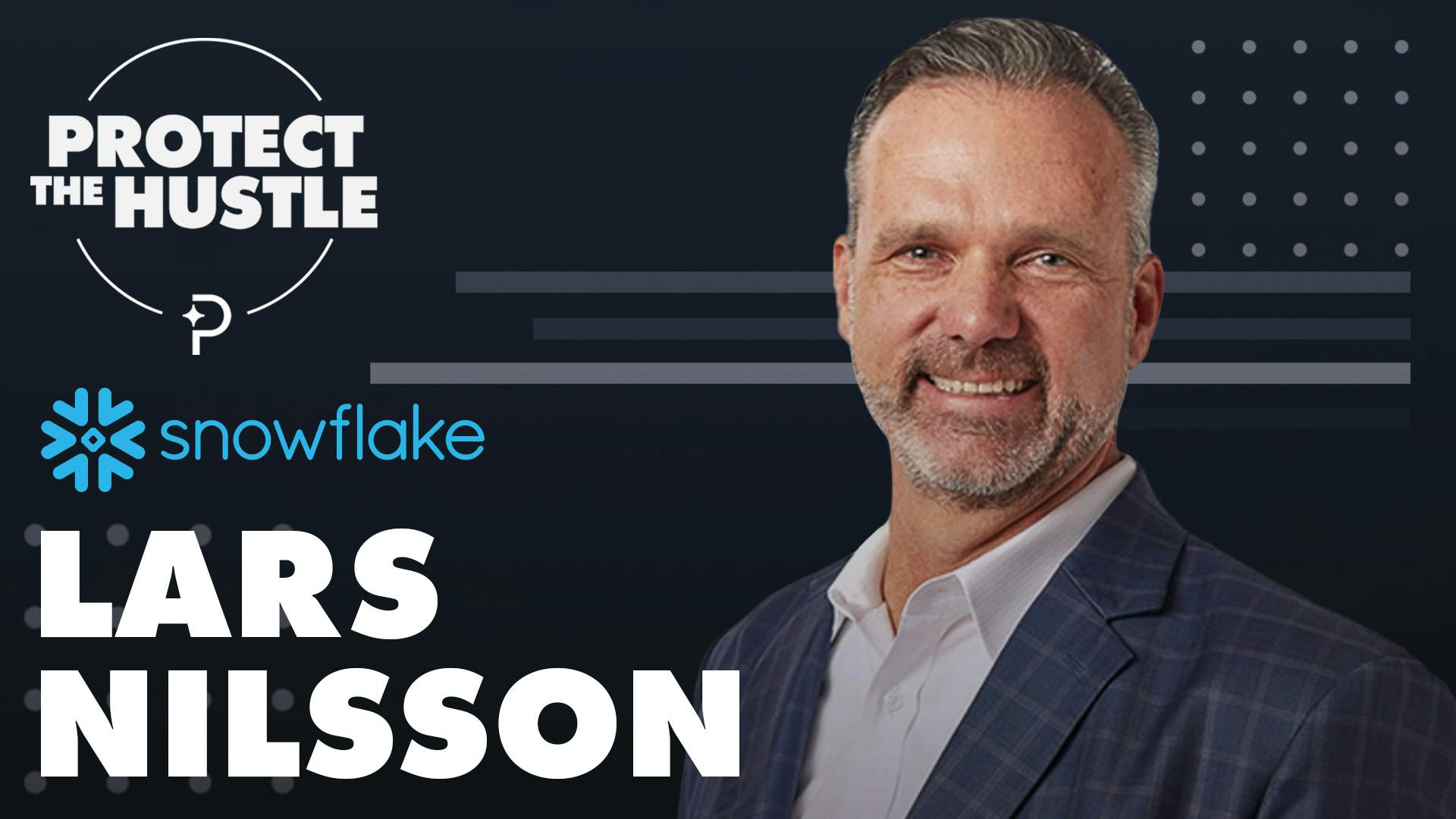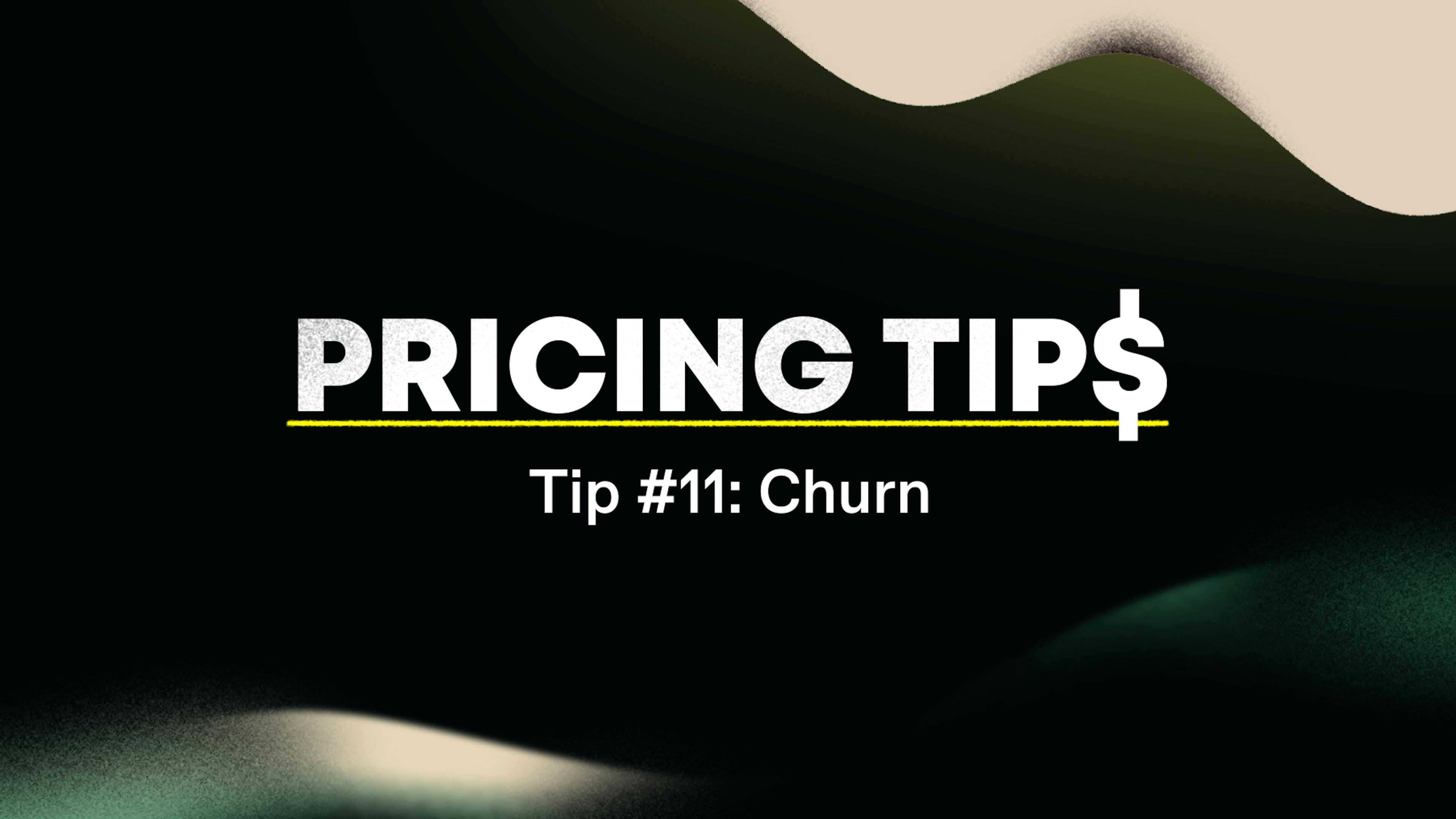
How Discounts Impact Retention
This episode might reference ProfitWell and ProfitWell Recur, which following the acquisition by Paddle is now Paddle Studios. Some information may be out of date.
Originally published: April 4th, 2018
Discounting is a huge topic of interest in the subscription economy, primarily because most people don't know how to discount effectively. As the data suggests, using unnecessary discounts can have a real negative impact on your business.
On this episode of the ProfitWell Report, Olof Mathé of Mixmax asks us to dive into the data around discount pricing. To answer his question, let’s look at the data from over 6,000 companies and 600,000 subscription consumers.
But first, if you like this kind of content and want to learn more, subscribe to get in the know when we release new episodes.

Affinity for discounting amongst sales teams
Discounts are a promotional pricing strategy seen as a virus within our current subscription community, not because they’re necessarily bad, but because we treat them like a sledgehammer instead of a scalpel.
To ease in here, let’s first look at the mindset of our sales and marketing teams. Just over seventy percent of practitioners believe that discounts should be used in some capacity to get customers to convert. On the flip side, less than ten percent of us believe that discounts should only be used as an absolute last resort.
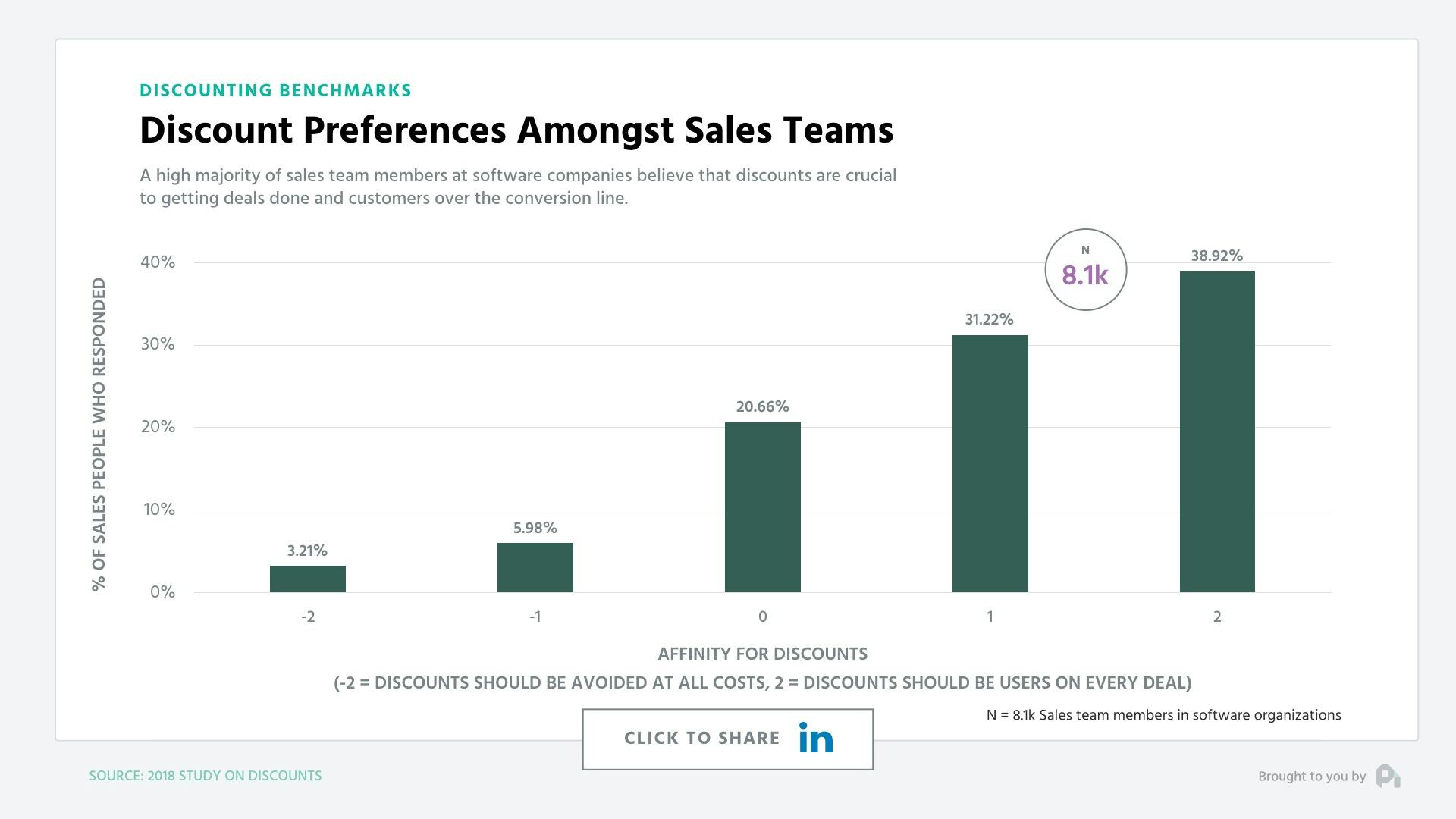
This isn’t necessarily bad, but the level of discount we’re willing to give is startling. Just under eighty percent of respondents believe that the appropriate discount to give is over 25%.
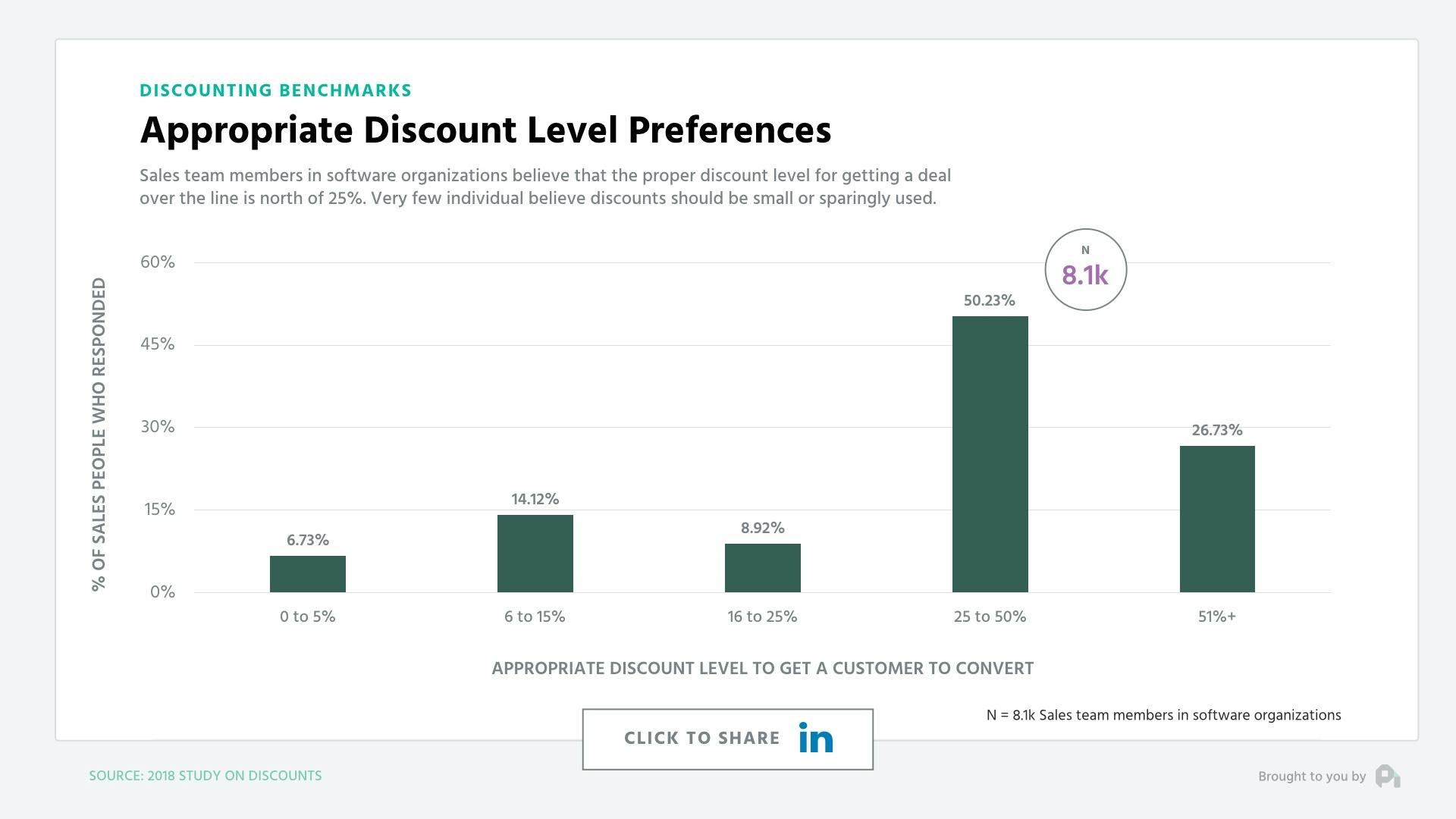
You may be looking at these numbers and thinking this isn’t that shocking, but let’s lay this out for a second. Your price is the exchange rate on the value you’re providing. Your sales and marketing team’s job is to justify that value to the prospect in order for them to convert at that value. Yet, Most of our sales and marketing teams are saying that in actuality, your value is only three fourths or worse.
Discounting makes revenue growth unpredictable
Personally I don’t think we’re aware just how prevalent this phenomenon is within our businesses, because discounts do get us to our goal. When profiling companies who’ve reached their goals with discounts vs without discounts, you’ll note they both cross the finish line, but this success indicates an elementary understanding of unit economics.
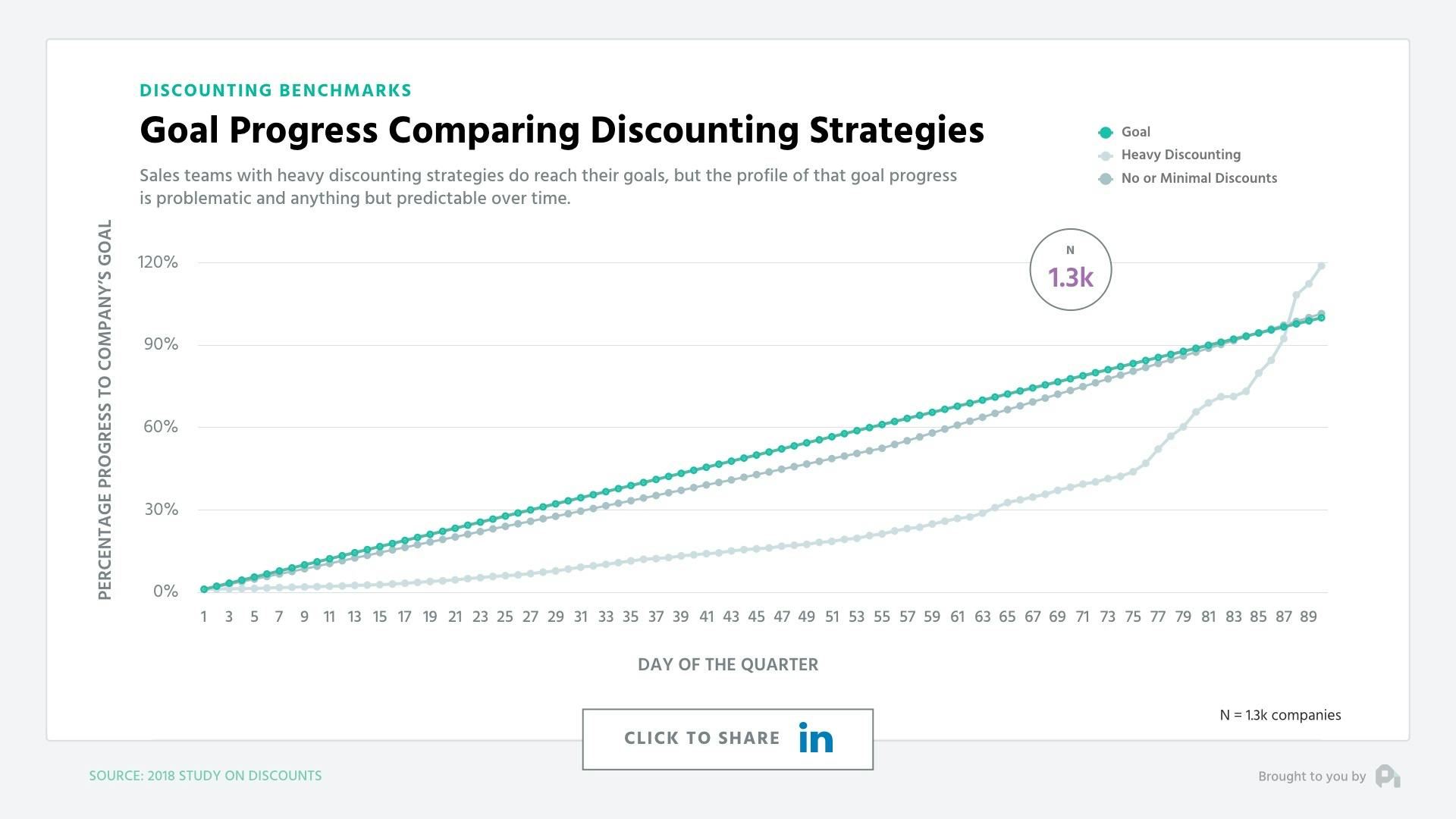
In reality, these discounted customers have just over double the churn rate as those who weren’t given a discount. When broken out by the level of discount you’ll notice a strong correlation of churn increasing as the discount level increases.
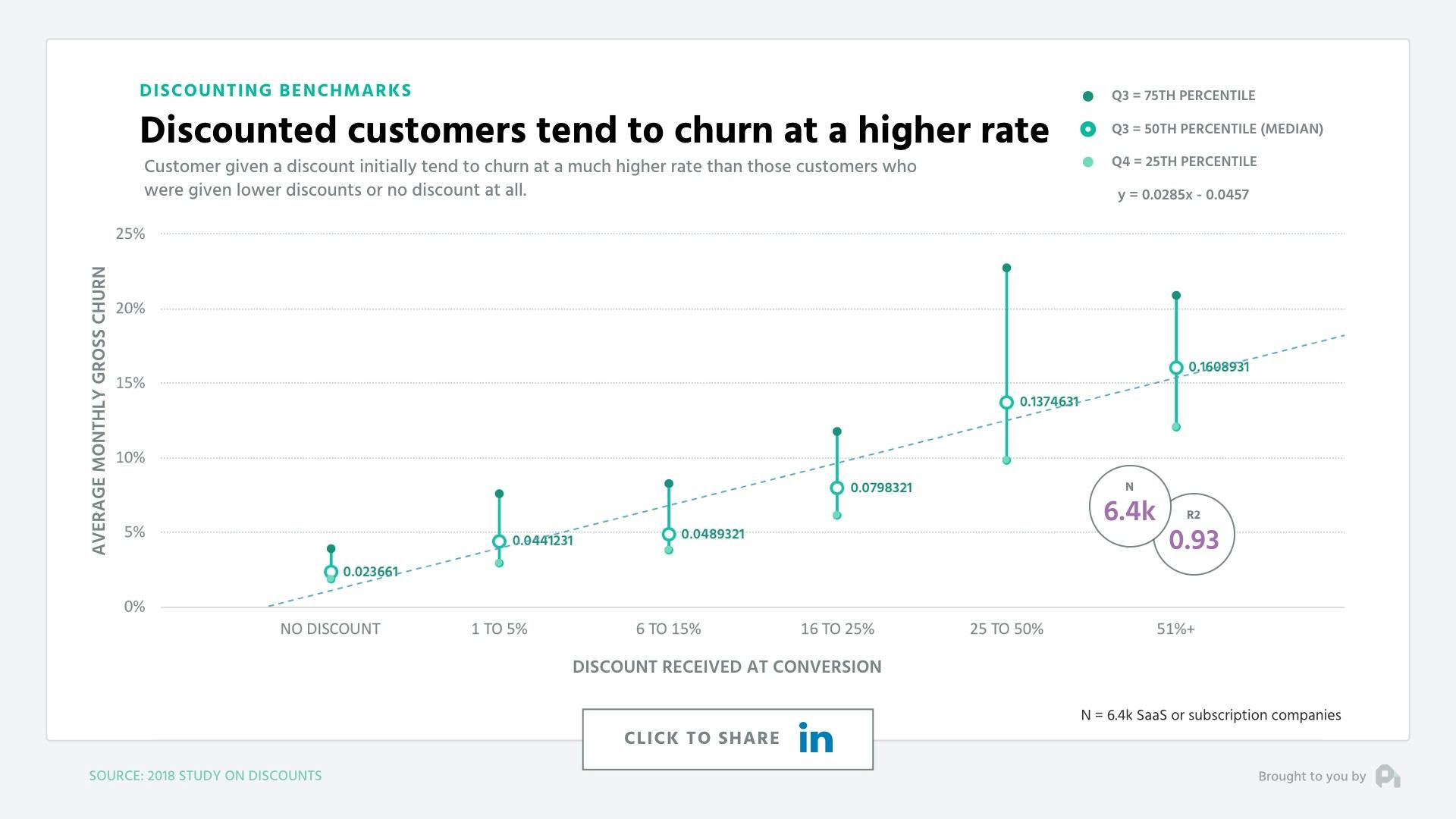
Renewal willingness to pay goes down after discounts
These individuals have simply been trained to devalue the product or just weren’t the right customers in the first place. In fact if we strictly look an annual contracts and we look at the willingness to pay of the customer at annual renewal compared to the discount level given at the original purchase, we see a dramatic drop off after the 30% discount mark in willingness to pay.
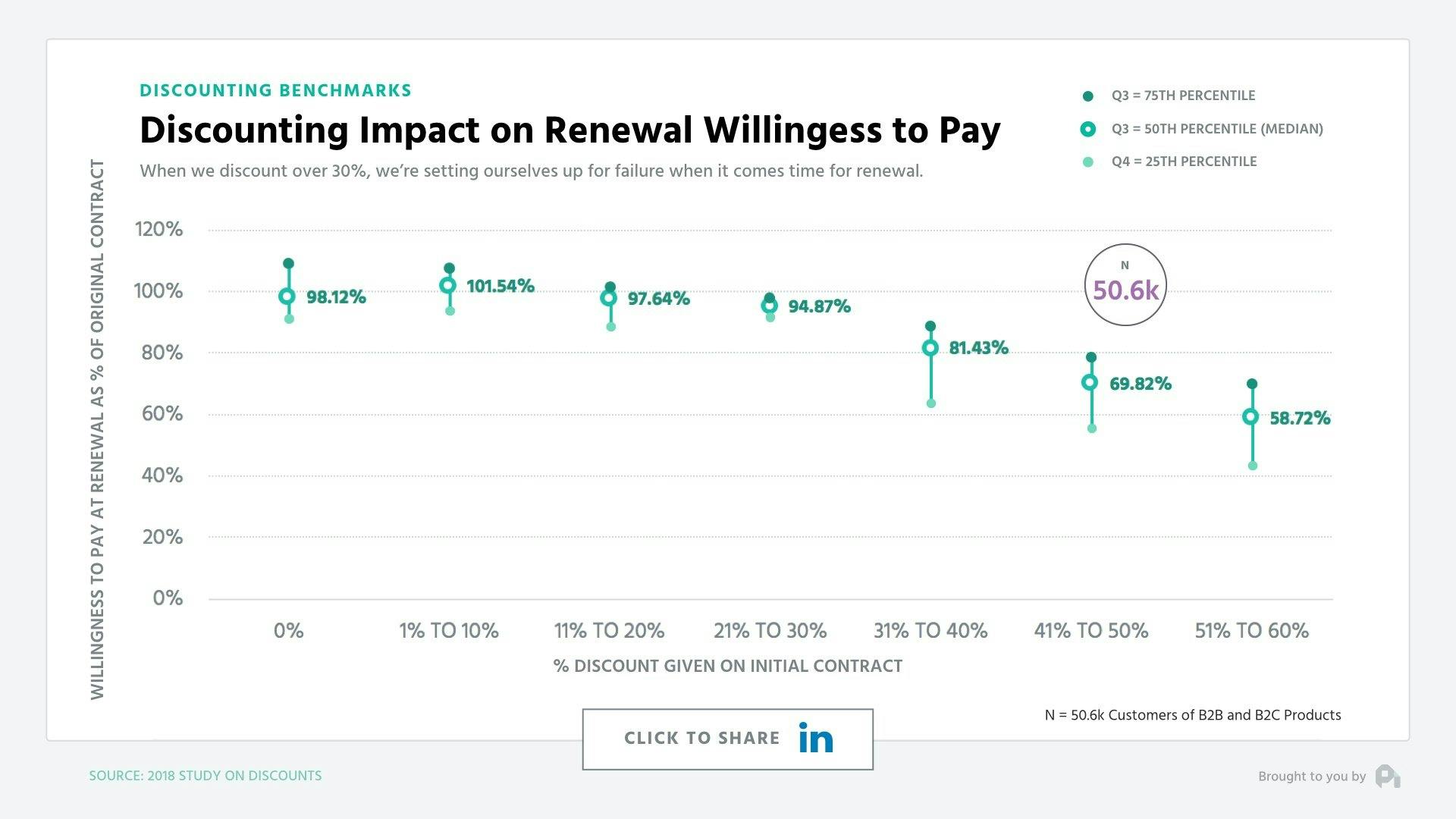
Yet, our teams think this is perfectly appropriate. We’re essentially robbing Peter to pay Paul where Peter is your customer success and product teams who gets dumped the problem of retention.
So should you not discount at all? No, that’s not what the data says, but you need to think about a discount as a scalpel - efficiently used as a catalyst to lower the activation energy of a prospect to get them to convert and see the true value of your product with expanded willingness to pay.
Want to learn more? Check out our recent episode: How Great Support Impacts Retention and subscribe to the show to get new episodes.

1
00:00:00,429 --> 00:00:03,870
You’ve got the questions and we have the
data.
2
00:00:03,870 --> 00:00:08,140
Each week we dive deep on benchmarks of the
subscription economy that you just can’t
3
00:00:08,140 --> 00:00:11,060
get anywhere else.
4
00:00:11,060 --> 00:00:13,820
This is: The ProfitWell Report.
5
00:00:13,820 --> 00:00:22,160
Hey Patrick, Olof from MixMax here, I’m
super curious: how do discounts affect renewal
6
00:00:22,160 --> 00:00:23,160
and retention rates?
7
00:00:23,160 --> 00:00:24,990
Loving that mixmax wallpaper, Olof.
8
00:00:24,990 --> 00:00:26,880
So, let’s talk discounts.
9
00:00:26,880 --> 00:00:30,050
To answer Olof’s question, we looked at
over six thousand companies and data from
10
00:00:30,050 --> 00:00:33,030
nearly six hundred thousand subscriber buyers.
11
00:00:33,030 --> 00:00:35,320
Here’s what we found.
12
00:00:35,320 --> 00:00:39,340
Discounts are a virus within our current subscription
community, not because they’re necessarily
13
00:00:39,340 --> 00:00:43,290
bad, but because we treat them like a sledgehammer
instead of a scalpel.
14
00:00:43,290 --> 00:00:47,739
To ease in here, let’s first look at the
mindset of our sales and marketing teams.
15
00:00:47,739 --> 00:00:51,149
Just over seventy percent of practitioners
believe that discounts should be used in some
16
00:00:51,149 --> 00:00:53,290
capacity to get customers to convert.
17
00:00:53,290 --> 00:00:57,390
On the flip side, less than ten percent of
us believe that discounts should only be used
18
00:00:57,390 --> 00:00:59,020
as an absolute last resort.
19
00:00:59,020 --> 00:01:04,650
This isn’t necessarily bad, but the level
of discount we’re willing to give is startling.
20
00:01:04,650 --> 00:01:09,040
Just under eighty percent of respondents believe
that the appropriate discount to give is over
21
00:01:09,040 --> 00:01:11,040
25%.
22
00:01:11,040 --> 00:01:14,850
You may be looking at these numbers and thinking
this isn’t that shocking, but let’s lay
23
00:01:14,850 --> 00:01:16,340
this out for a second.
24
00:01:16,340 --> 00:01:19,930
Your price is the exchange rate on the value
you’re providing.
25
00:01:19,930 --> 00:01:24,689
Your sales and marketing team’s job is to
justify that value to the prospect in order
26
00:01:24,689 --> 00:01:26,190
for them to convert at that value.
27
00:01:26,190 --> 00:01:29,990
Yet, Most of our sales and marketing teams
are saying that in actuality your value is
28
00:01:29,990 --> 00:01:32,240
only three fourths or worse.
29
00:01:32,240 --> 00:01:36,150
Personally I don’t think we’re aware just
how prevalent this phenomenon is within our
30
00:01:36,150 --> 00:01:39,420
businesses, because discounts do get us to
our goal.
31
00:01:39,420 --> 00:01:43,350
When profiling companies who’ve reached
their goals with discounts vs without discounts,
32
00:01:43,350 --> 00:01:48,170
you’ll note they both cross the finish line,
but this success indicates an elementary understanding
33
00:01:48,170 --> 00:01:49,610
of unit economics.
34
00:01:49,610 --> 00:01:53,680
In reality, these discounted customers have
just over double the churn rate as those who
35
00:01:53,680 --> 00:01:55,170
weren’t given a discount.
36
00:01:55,170 --> 00:02:00,479
When broken out by the level of discount you’ll
notice a strong correlation of churn increasing
37
00:02:00,479 --> 00:02:02,720
as the discount level increases.
38
00:02:02,720 --> 00:02:07,189
These individuals have simply been trained
to devalue the product or just weren’t the
39
00:02:07,189 --> 00:02:09,489
right customers in the first place.
40
00:02:09,489 --> 00:02:13,609
In fact if we strictly look an annual contracts
and we look at the willingness to pay of the
41
00:02:13,609 --> 00:02:19,010
customer at annual renewal compared to the
discount level given at the original purchase,
42
00:02:19,010 --> 00:02:24,040
we see a dramatic drop off after the 30% discount
mark in willingness to pay.
43
00:02:24,040 --> 00:02:27,120
Yet, our teams think this is perfectly appropriate.
44
00:02:27,120 --> 00:02:32,040
We’re essentially robbing Peter to pay Paul
where Peter is your customer success and product
45
00:02:32,040 --> 00:02:35,609
teams who gets dumped the problem of retention.
46
00:02:35,609 --> 00:02:37,879
So should you not discount at all?
47
00:02:37,879 --> 00:02:41,620
No, that’s not what the data says, but you
need to think about a discount as a scalpel
48
00:02:41,620 --> 00:02:46,219
- efficiently used as a catalyst to lower
the activation energy of a prospect to get
49
00:02:46,219 --> 00:02:50,349
them to convert and see the true value of
your product with expanded willingness to
50
00:02:50,349 --> 00:02:51,810
pay.
51
00:02:51,810 --> 00:02:52,810
That's all for now.
52
00:02:52,810 --> 00:02:56,859
If you have a question, ship me an email or
video to pc@profitwell.com and let's also
53
00:02:56,859 --> 00:03:01,629
thank Olof for sparking this research by clicking
the link below to share on Linkedin to give
54
00:03:01,629 --> 00:03:02,629
him a shoutout.
55
00:03:02,629 --> 00:03:06,519
We’ll see you next week.
56
00:03:06,519 --> 00:03:08,989
This episode of the ProfitWell Report is brought
to you by Litmus.
57
00:03:08,989 --> 00:03:13,450
Litmus is the easiest way for teams to create
great email for every subscriber, everywhere.


